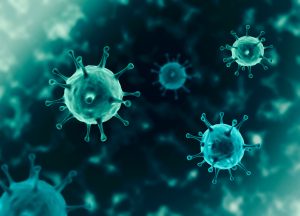COVID-19 Variants: The Top Variants and What You Need to Know
Viruses are constantly evolving due to mutations and COVID-19 is no exception. As the disease progresses, so do its mutations.
There are a few new strains that have appeared throughout parts of the world. Some of these parts include the United Kingdom, South Africa, and Brazil.
These variants are:
- B.1.1.7
- B. 1351
- P.1
- CAL.20C
- B.1.617.2
These aren’t the only strains making headway, though. Due to their nature, there is still much that scientists have yet to discover about these mutations. There is also much to learn about what these mutations mean for the existing vaccinations.
But how do these mutations happen in the first place?
How Mutations Occur
For a new variant to occur, the genetic material of an infected cell must be copied from the original host cell so it can go on to infect new cells.
How does this happen?
An enzyme called a polymerase copies a cell’s genetic material. A mutation occurs when the polymerase makes a mistake during the process. Sometimes this mutation does nothing. Sometimes, it harms the virus, making it unable to function properly and decreasing its chances of survival. But in the worst-case scenario, it makes the virus more powerful.
The Known Coronavirus Variants
B.1.1.7: The United Kingdom Variant
B.1.1.7 became the dominant strain of COVID-19 in the United Kingdom in the fall of 2020. Since then, this strain has been identified in at least 80 other countries around the world, including the United States. (1) The concern is that this variant may become the main type of virus in the United States.
This variant is different because it’s transferred easier between people. The mutations in this B.1.1.7 variant affect the spike protein.
What is a spike protein?
The spike protein is found on the surface of the virus. This is what the virus uses to bind to and enter a host cell within the body. It’s thought that this mutation in the spike protein helps this Coronavirus variant bind more tightly to a host cell.
B.1351: The South African Variant
Similar to B.1.1.7, COVID-19 variant 1.351 was identified in the fall of 2020. It’s been found in at least 41 other countries. This variant shows some of the same spike protein mutations as B.1.1.7, but with other mutations as well. While this variant seems less threatening, there is concern that it could have a different effect on immunity.
P.1: The Brazilian Variant
This Coronavirus variant is the newest variant and has over 17 unique mutations (2). These mutations include the spike protein mutations from B.1.1.7 and B.1351 and several other mutations.
CAL.20C: The US Variant
The Cal.20C variant now accounts for half of the COVID-19 cases in Southern California.
Researchers found that the strain dates as far back as July. By the end of January, this strain was more than 30% of cases in California and more than 40% in Southern California.
B.1.617.2: The Delta Variant
The COVID-19 Delta variant is thought to pose more of a threat to the United States as it’s more contagious than the strains listed above and produces more serious symptoms. This variant, also known as B.1.617.2, first appeared in India but is now recognized in over 70 countries. (3)
When it comes to symptoms from the Delta variant, they are typically more severe. For example, fevers are quite common.
With this variant, the levels of the virus rise higher in the body than previously seen during the initial pandemic. The onset of symptoms usually appears within 3 or 4 days.
Do The New Variants Have Different Symptoms?

From what clinical research shows us, none of these variants are associated with different symptoms. Per the CDC, the most common symptoms of COVID-19 include:
- Fever or chills
- Cough
- Shortness of breath or difficulty breathing
- Fatigue
- Muscle or body aches
- Headache
- New loss of taste or smell
- Sore throat
- Congestion or runny nose
- Nausea or vomiting
- Diarrhea
Vaccines and Mutations
The main concern throughout it all is whether or not the coronavirus variants have an impact on the effectiveness of our current vaccines. As we know, some of the vaccine types include Pfizer, Moderna, and Johnson & Johnson.
What does the data say about these vaccines?
Pfizer
The larger clinical trials of the Pfizer vaccine found the vaccine effectiveness was 95% (4) against the original COVID-19 virus.
One study took a look at the effectiveness of this vaccine for test viruses that have the B.1351 variation.
How did they do this?
Researchers took serum from individuals vaccinated with the Pfizer vaccine because of the antibodies it contains. As a result, the study showed that this serum was less effective against B.1351. The same was done for the Moderna vaccine.
Moderna
The clinical trials of the Moderna vaccine found the vaccine effectiveness was 94.1% against the original version of the coronavirus. (5)
Research showed that the test viruses with B.1.1.7 protein mutations were neutralized like the original coronavirus. However, when tested on the B.1351 variant, the effect was much lower (6).
Johnson & Johnson
The Johnson & Johnson vaccine is different from Pfizer and Moderna vaccines. Why? It only requires one dose.
One J & J vaccine trial in South Africa showed the effectiveness of the vaccine against these variants.
How?
During the time of the trial, many COVID-19 cases in South Africa were caused by the B.1.351 variant. The Johnson & Johnson vaccine was 52 percent effective for mild to moderate COVID-19 and 73.1 percent effective for severe to critical COVID-19. (7)
The Bottom Line
As new mutation variants continue to emerge, we will continue to look to the vaccines to provide protection. While these vaccines may not protect us completely, they still provide some level of safety.
Research into the identified coronavirus variants is a rapidly evolving area. Additionally, new variants will be detected as the coronavirus continues to circulate.
As a result, one of the best things you can do to protect yourself from the coronavirus and its variants is to get vaccinated.



 What Really Happens When We Unfriend Someone On Facebook?
What Really Happens When We Unfriend Someone On Facebook?









Show Comments